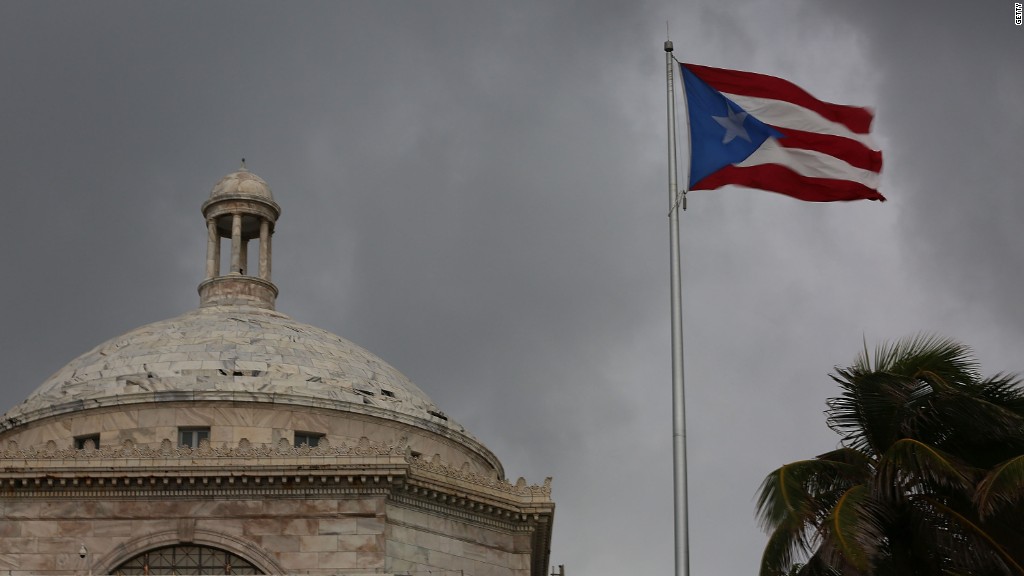
Puerto Rico has a new plan to get out of its massive debt crisis: Use a big eraser.
The island's taxpayers are currently on the hook to pay back about $50 billion. On Monday, Puerto proposed cutting that nearly in half to $26.5 billion.
So far, Puerto Rico's creditors are not impressed.
"It's frustrating, and it doesn't feel like a credible offer," a person close to major creditors told CNNMoney.
The crisis is likely to end up in a lengthy court battle unless Washington politicians step in. Congress is holding another hearing on Puerto Rico this week. Republican House Speaker Paul Ryan promised to do something to aid the island by the end of March.
Puerto Rico's governor has repeatedly said the island can't pay back all of the money it owes to creditors. Governor Alejandro García Padilla says the island is in a "death spiral" that is turning into a humanitarian crisis.
The island is now struggling to pay teachers and is delaying payments to companies such as the vendor that supplies food to its prisons.
Puerto Rico is so short of funds that it already defaulted twice, once in August and once in early January.
Related: Puerto Rico defaults for a 2nd time
"I don't think this plan is going to get very far," says David Tawil, president of Maglan Capital. His firm used to own Puerto Rican debt, but sold its last holdings in 2014. "I don't see anywhere in the capital structure to make money now."
Many Puerto Ricans are worried about the island's sagging economy. They are migrating to the mainland United States in large waves not seen since the 1950s "West Side Story" era.
On the creditor side, while some of the debt is owned by hedge funds, a lot is held by regular people who either bought the bonds or invested in funds such as the Franklin Double Tax-Free Income Fund (FPRIX) that own a lot of the Puerto Rican debt.
"We encourage the commonwealth to try again and to remember that a majority of the debt is held by individual investors, many of whom are seniors and retirees," says Matthew Kandrach, a representative of Main Street Bondholders, a coalition of Puerto Rican bondholders.
Related: Puerto Rico has a brain drain problem
Puerto Rico's government argues the only way to keep paying school teachers and police and get the economy growing again is the trim the debt. At the moment, about 36% of the government's adjusted revenues go to debt payments. The island says it can't afford to pay more than 15%.
The proposal is for creditors to voluntarily exchange their current bonds for new bonds.
"A crisis of this magnitude must be addressed in concert, otherwise we risk our ability and the opportunity to escape the spiral of a stagnating economy, endless deficits and increasing debt," said Victor Suarez, Puerto Rico's secretary of state.
Puerto Rico currently owes creditors $49.2 billion in debt backed by taxpayers. Under the island's plan, creditors would receive $26.4 billion of new bonds guaranteeing payment. Then they would get $22.7 billion of "growth bonds" that would only be paid if Puerto Rico has sufficient revenues to do so.
Overall, the island has about $70 billion in debt, but some of that belongs to the troubled utility company or other government entities.


